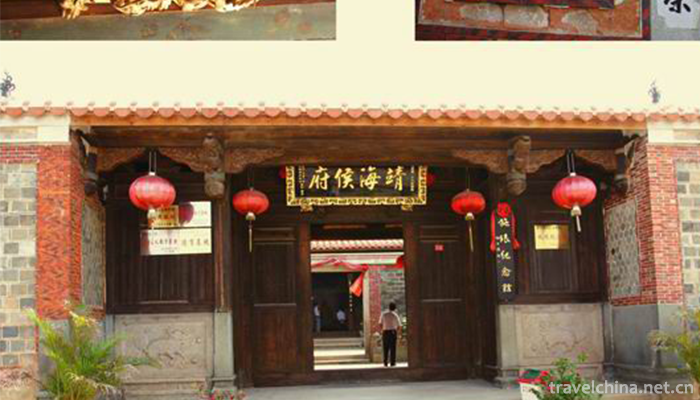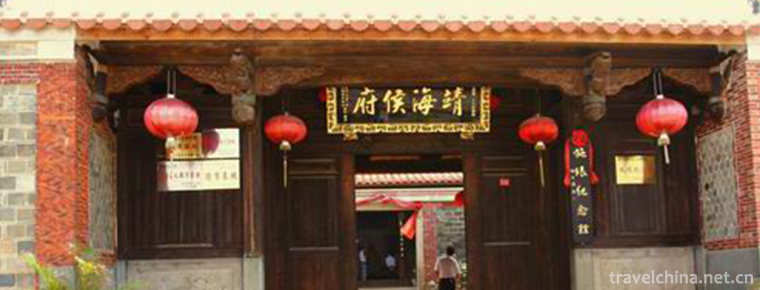Construction Techniques of Traditional Residential Buildings in Southern Fujian
Construction Techniques of Traditional Residential Buildings in Southern Fujian
South Fujian residential building technology is a unique traditional architectural technology originating in Quanzhou, which began in Tang and Five Dynasties, is the mainstream of ancient architectural technology in South Fujian, and spread in Quanzhou, Zhangzhou, Xiamen, Taiwanese, Hong Kong, Macao and Southeast Asia in the cultural circle of South Fujian.
The official Dacuo, commonly known as the "Palace Rise", is the most typical type in Quanzhou. It can be seen everywhere in the overseas Chinese hometown of Quanzhou. Its representative works include the ancient residence of Cai's family in Nan'an, a national cultural relic protection unit, and the former residence of Yang A Miao, a cultural relic protection unit in Fujian Province.
brief introduction
What is "Building Skills of Minnan Residential Buildings"
Southern Fujian dwelling belongs to a school of traditional Chinese courtyard dwelling. It is a type of dwelling with the most advanced material use and structural technology, the most abundant constituent factors, the most complex level of "ritual" and the most diverse decoration.
The construction techniques of folk houses in southern Fujian are divided into big wood work, small wood work, tile work, brick and stone work, paint work, color painting, stacking and cutting work, among which big wood work is the most important. Craftsmen are also classified and divided according to their types of work, with large carpenters as the core.
characteristic
This technique originated in Quanzhou and is the mainstream of ancient architectural techniques in southern Fujian.
Morning Post News (reporter Zhang Suping) Quanzhou Nanyin, Quanzhou Li Yaobao carved paper has been selected into the world's "non-heritage" list, but little known is that the Quanzhou Museum initiated the election of the Southern Fujian residential construction skills are also included in the world's "non-heritage"!
Reporters learned yesterday that from August 19 to 20, China was selected as the UNESCO "intangible cultural heritage of mankind" project certification ceremony and Protection Forum was held in Beijing. Chinese traditional wooden structure construction techniques are listed in the "non-legacy" list of the world, and southern Fujian residential construction techniques, as one of its three major skills, are also included.
Yao Hongfeng, renovator of the International Ancient Architecture of Quanzhou Cultural Relics Conservation Research Center, said that the traditional Chinese wooden structure construction technology is "bundled" together with the construction technology of three provinces in China and jointly declared. Fujian Province is one of them, and Quanzhou is the only city in Fujian Province to participate in the merger.
In fact, the declaration work started as early as 2008. "We take Yang'a Miao Residence as a representative building, and have produced relevant text, pictures and video materials to introduce the building techniques of Minnan Residence." Chen Jianzhong, curator of Quanzhou Museum, said that the building skills of folk houses in southern Fujian originated from Quanzhou, and the staff took Yang A Miao's building skills as a model to "elaborate" the skills. This skill is a sub-item of "Chinese traditional wooden structure construction skill". Perhaps it caused this skill to be selected into the world "non-legacy", but for a long time "raised in the boudoir people do not know".


-
2.Guo Moruos Former Residence in Beijing
Guo Moruo's former residence is located at No. 18, Qianhaixi Rim, Xicheng District. Originally a garden in Heling in Qing Dynasty, it became the forage yard and stables of Yixian Mansion of Prince Gon
Time 2019-01-13 -
3.March Street Dali
"Yuejie", or March Street of Dali, also known as "Guanyin City, also known as the March Meeting of Dali, today also known as the National Day of March Street, is a grand festival and st
Time 2019-04-23 -
4.Printing and Dyeing Techniques of Liquidambar formosana
Maple fragrance dyeing and production technology, Guizhou Huishui County, Majiang County, local traditional skills, one of the national intangible cultural heritage.
Time 2019-04-29 -
5.Quyi
Quyi is the general name of all kinds of "rap art" of the Chinese nation. It is a unique art form formed by the long-term development of folk oral literature and singing art. According to in
Time 2019-06-11 -
6.Shengzhou Blows
Shengzhou blowing is one of the main components of "gong and drum in eastern Zhejiang". "Zhedong Gong and drum" generally refers to the traditional folk instrumental music in easte
Time 2019-06-14 -
7.Uygur Sainem
Among the numerous traditional folk dances, "Sainem" is the most common form of Uygur folk song and dance. It is widely spread in the towns and villages in the north and south of Tianshan Mo
Time 2019-06-27 -
8.Xinjiang Opera
Xinjiang Opera, commonly known as "Xinjiang Xiaoqu", is a kind of local opera with unique style, which has been gradually formed and perfected after Shaanxi Opera, Qinghai Pingxian Opera, La
Time 2019-07-06 -
9.Recitative
Recitation is a local traditional music form in Changzhou City, Jiangsu Province, which has a high reputation at home and abroad. The art of reciting belongs to "minority culture", which is
Time 2019-07-13 -
10.Xihua University
Xihua University, located in Chengdu City, Sichuan Province, is a provincial key comprehensive university with complete disciplines and multi-disciplinary development. It has been selected as "Ba
Time 2019-08-31 -
11.Han Feizi
Han Feizi is a collection of works of famous thinkers and Legalists Han Fei during the Warring States period. Han Feizi was compiled by posterity after Han Fei's death. According to hanshuyiwenzhi &qu
Time 2019-09-07 -
12.Notes on Tourism in Ganzi Prefecture
1. Ganzi Prefecture is characterized by Tibetan culture, snow mountain and grassland scenery, with high average sea level. Most people will have altitude reaction when they go to Ganzi Prefecture. To prevent and deal with altitude reaction, please refer to the precautions for altitude reaction.
Time 2020-12-06